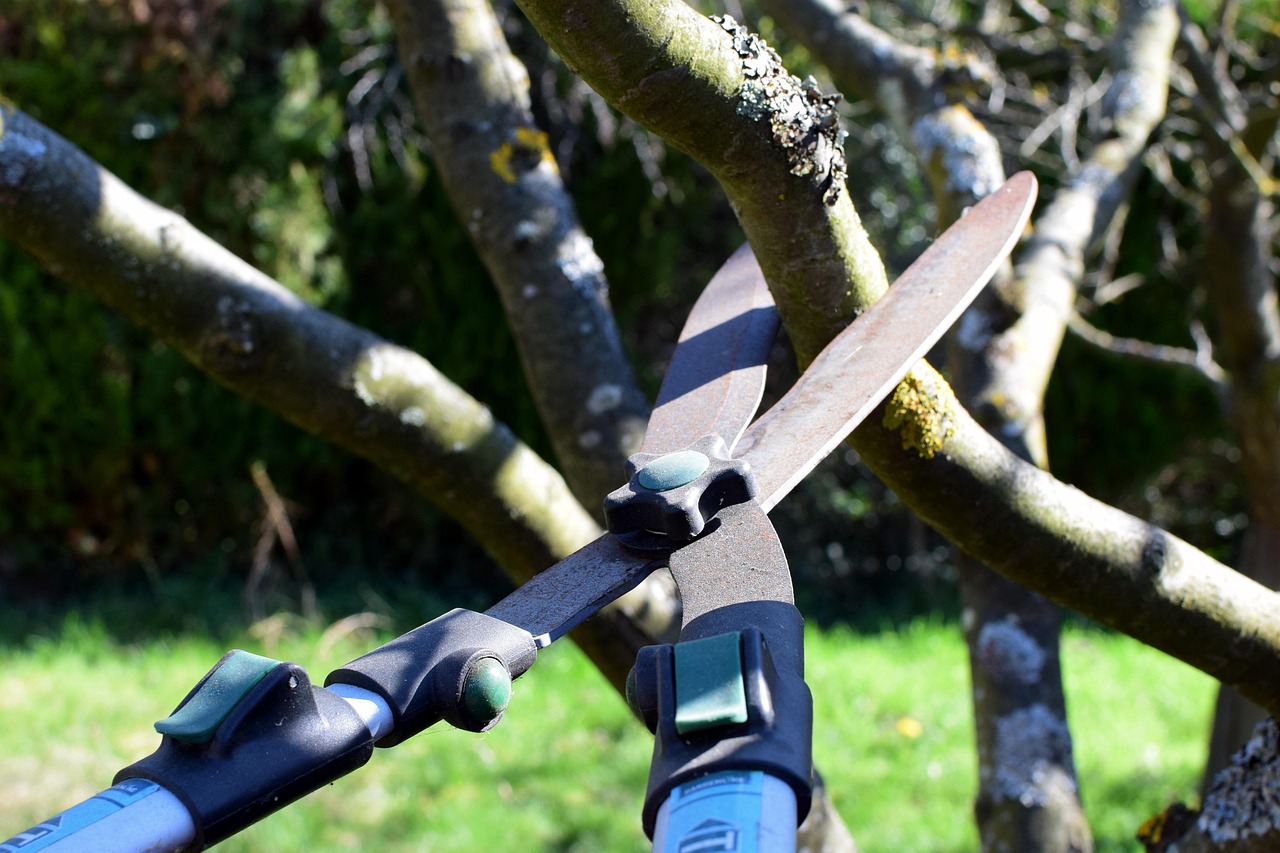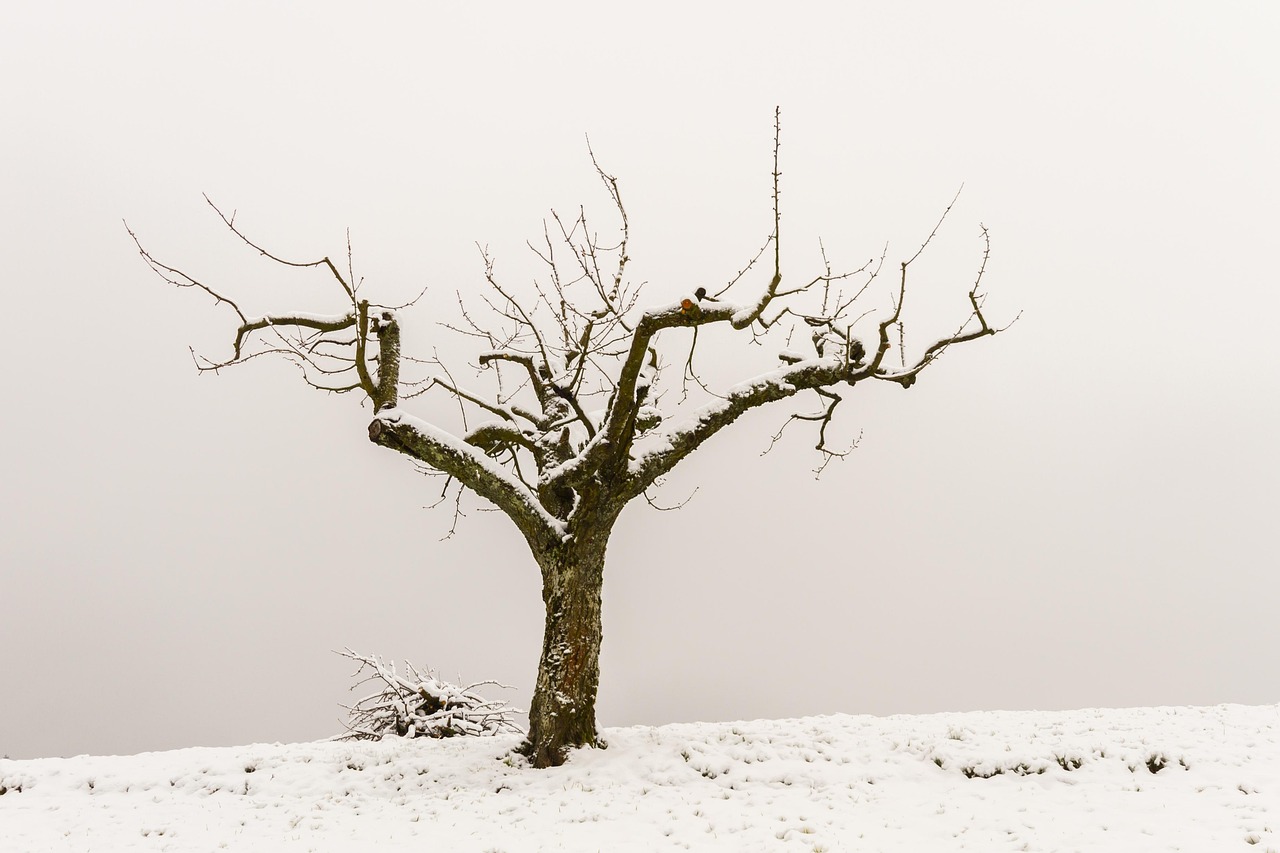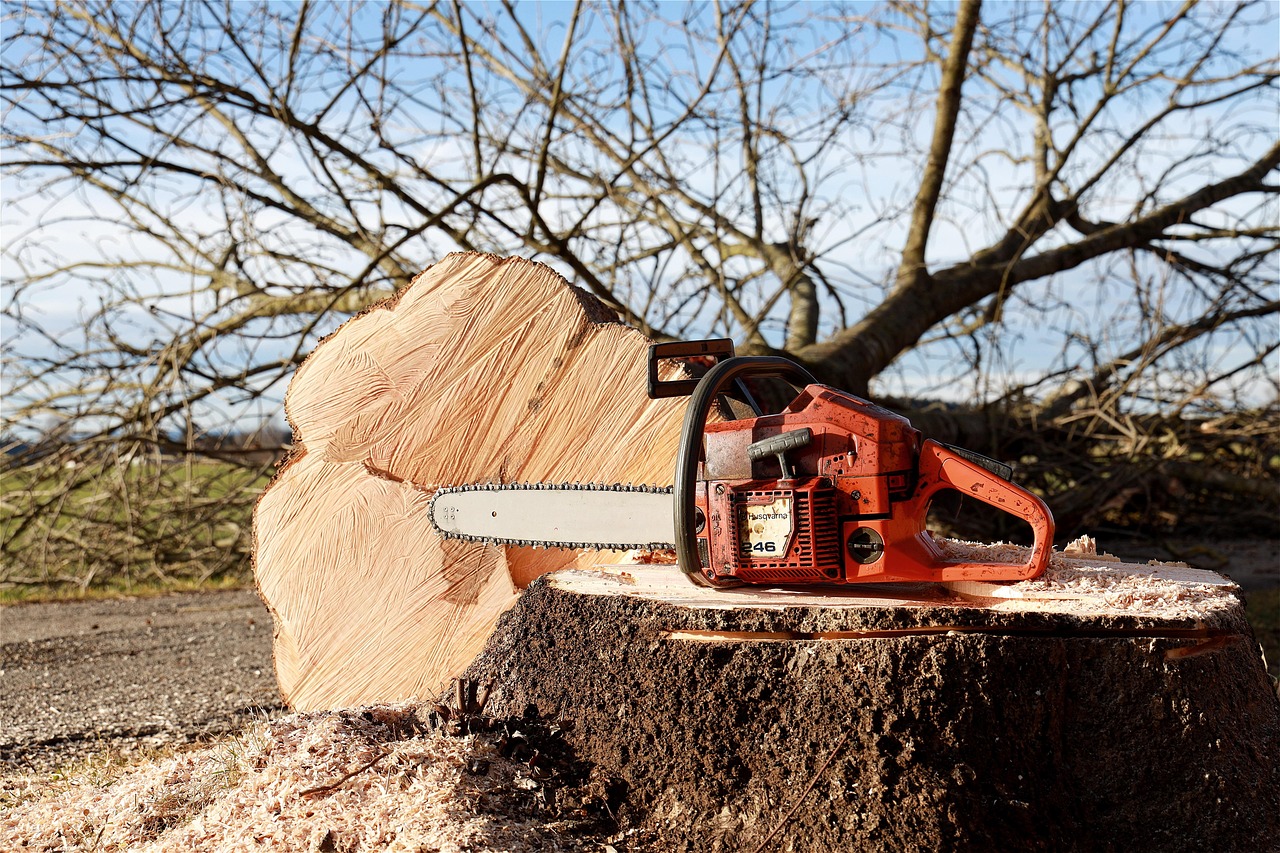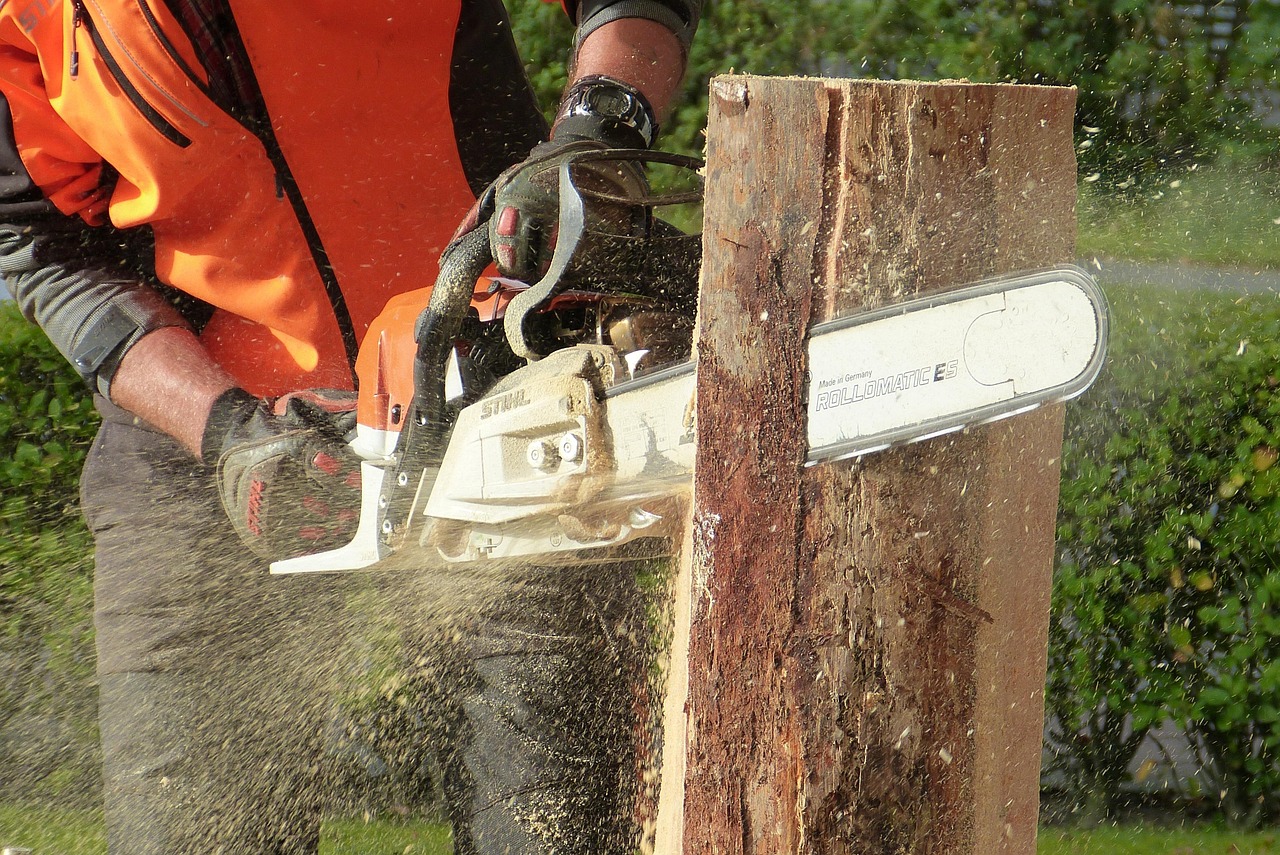Tree pruning plays a vital role in pest control and disease prevention by removing dead or diseased branches, enhancing air circulation, and allowing sunlight to penetrate the canopy, which creates an environment less conducive to pests and pathogens.
Healthy trees are essential for maintaining a balanced ecosystem. They provide shade, improve air quality, and support wildlife. However, like all living organisms, trees are susceptible to pests and diseases that can hinder their growth and longevity. One of the most effective ways to combat these threats is through regular tree pruning. This practice not only enhances the aesthetic appearance of trees but also promotes their overall health by minimizing the risks posed by harmful insects and diseases.

Understanding the relationship between tree pruning and pest management begins with recognizing how pests and diseases affect trees. Insects such as aphids, beetles, and caterpillars can quickly damage trees if their populations are not kept in check. Similarly, fungal infections and bacterial diseases can spread through dense foliage, making trees more vulnerable to severe health issues. Pruning helps mitigate these risks by removing infected or infested branches before they can impact the entire tree.
The Benefits of Tree Pruning
Tree pruning offers several benefits that contribute to pest control and disease prevention. Some of the most important advantages include:
- Improved Air Circulation: Pruning opens up the canopy of a tree, allowing air to flow freely. This circulation helps reduce humidity levels around the tree, making it less hospitable for pests and fungal growth.
- Increased Sunlight Exposure: By thinning out crowded branches, sunlight can reach more parts of the tree. This exposure helps keep foliage dry, which further discourages disease development.
- Removal of Diseased Material: Regularly cutting away dead or diseased branches prevents the spread of pathogens to healthy parts of the tree.
- Enhanced Tree Structure: Pruning encourages strong growth patterns and prevents weak branches from breaking, which can create wounds that serve as entry points for pests.
In addition to these benefits, tree pruning can also enhance the overall vitality of a tree. When trees are pruned effectively, they can produce more robust foliage and fruit. This increase in vigor makes them less susceptible to infestations and infections as they are healthier overall.

Pro-Tips and Common Mistakes to Avoid
When I first started pruning trees, I quickly learned a few lessons the hard way. Here are some of my most valuable tips—and mistakes I’ve made—that can help you avoid pitfalls and prune effectively:
- When I first tried pruning without tools, I realized it’s crucial to use sharp, clean tools. Dull blades tore the branches instead of making clean cuts, which slowed healing and increased disease risk. Always sharpen your pruners and saws before starting.
- Initially, I didn’t pay attention to the angle of my cuts. Cutting at a 45-degree angle allows water to run off, reducing rot and promoting faster healing. Make sure your cuts are clean and angled properly.
- In the beginning, I cut too close to the trunk, leaving a stub. I’ve since learned to make cuts just above a bud facing outward. Proper cuts prevent damage and encourage healthy growth.
- When I neglected to assess the tree before pruning, I often removed more than necessary. Now, I always take a step back to evaluate which branches are dead, diseased, or crossing, so I prune judiciously.
- Initially, I pruned all at once, which stressed the tree. Doing pruning in stages—starting with removing dead branches, then thinning out crowded areas—helps the tree recover and promotes better health.
- I used to prune during wet weather, unknowingly spreading fungal spores. Now, I always choose dry days for pruning to minimize disease spread.
- Over-pruning can weaken a tree and invite pests. I learned to follow the “thinning overheading” rule—remove only what is necessary to maintain the tree’s natural shape and health.
- Finally, I ignored post-pruning monitoring, which led to missed pest or disease issues. I now keep a close eye on my trees afterward, ensuring they stay healthy and catch problems early.
By learning from these experiences, you’ll be able to prune your trees more effectively, promoting their health and longevity while keeping pests and diseases at bay.
Timing Your Pruning
Knowing when to prune is crucial for maximizing its effectiveness in pest control and disease prevention. The timing may vary depending on the type of tree and the specific pests or diseases that you are targeting. Here are some general guidelines:
- Late Winter to Early Spring: This is typically the best time for most deciduous trees. Pruning during dormancy allows for effective cuts without stressing the tree.
- After Flowering: For flowering trees, it’s best to prune after they have bloomed. This timing ensures that you do not remove potential flowers for the next season.
- Avoid Wet Conditions: Pruning during wet weather can increase the risk of spreading fungal spores. Aim for dry days when performing cuts.
It’s important to keep in mind that some pests are more active during certain times of the year. For example, if you notice an infestation of caterpillars or aphids, it may be wise to prune affected areas sooner rather than later to prevent further damage.
Common Pests and Diseases Addressed by Pruning
Different pests and diseases pose unique challenges to tree health. Understanding these threats can help you prioritize your pruning efforts effectively. Below is a table summarizing some common pests and diseases associated with trees:

| Pest/Disease | Description | Pruning Strategy |
|---|---|---|
| Aphids | Small sap-sucking insects that can weaken trees. | Remove infested branches and promote beneficial insects. |
| Powdery Mildew | A fungal disease causing white powdery spots on leaves. | Prune affected leaves and improve air circulation. |
| Canker Diseases | Fungal or bacterial infections that create sunken areas on bark. | Cut away infected areas to prevent spread. |
| Spider Mites | Tiny pests that cause stippling on leaves and can lead to defoliation. | Remove heavily infested leaves and ensure proper watering. |
By familiarizing yourself with these common threats, you can better understand how pruning plays a critical role in maintaining healthy trees and reducing pest-related problems. Proper techniques combined with timely actions create a robust defense against both pests and diseases.
Essential Pruning Techniques
To achieve effective pest control and disease prevention through tree pruning, it’s important to employ the right techniques. The following sections will cover various pruning methods, tools needed, and best practices to ensure that your trees remain healthy and resilient.
Types of Pruning Techniques
Different pruning techniques serve specific purposes. Understanding these techniques will help you choose the right method for your trees. Here are some common types:

- Thinning: This involves selectively removing branches to increase light penetration and air circulation within the canopy. It helps reduce moisture, which can lead to fungal growth.
- Heading: This method involves cutting back a branch to a bud or another branch. It encourages bushier growth and can help manage the size of the tree.
- Reduction: Reduction pruning reduces the height or spread of a tree without altering its natural shape. This technique is useful for controlling tree size while maintaining aesthetics.
- Cleaning: Cleaning involves removing dead, damaged, or diseased branches. This technique is essential for preventing the spread of pests and diseases.
Tools Required for Pruning
Having the right tools is crucial for effective pruning. Below is a list of essential tools along with their uses:
- Hand Pruners: Ideal for small branches and precise cuts. They are perfect for general pruning tasks.
- Loppers: Used for cutting thicker branches that are too large for hand pruners. They provide better leverage and reach.
- Saws: Pruning saws are designed for cutting larger branches. Ensure that the saw is sharp for clean cuts.
- Climbing Gear: For tall trees, safety gear such as harnesses and ropes is necessary to ensure safe pruning at height.
- Safety Goggles and Gloves: Protect your eyes and hands while pruning. Safety should always be a priority.
Best Practices for Pruning
Pruning is not just about cutting branches; it involves careful planning and execution. Here are some best practices to follow:
1. Assess the Tree
Before you begin pruning, take time to assess the tree’s health and structure. Look for:
- Signs of disease or pest damage.
- The overall shape of the tree.
- Branches that cross or rub against one another.
2. Make Clean Cuts
Always use sharp tools to make clean cuts. This minimizes damage to the tree and helps it heal faster. When making cuts:
- Aim to cut at a 45-degree angle to allow water to run off.
- Make cuts just above a bud that faces outward to encourage outward growth.
3. Prune in Stages
If you have a large tree or extensive pruning needs, do not attempt to do everything in one session. Instead, prune in stages:
- Start with removing dead or diseased branches.
- Next, thin out crowded areas to improve air circulation.
- Finally, address any shaping or reduction as necessary.
4. Monitor Tree Health Post-Pruning
After pruning, it’s essential to monitor your tree’s health closely. Look for any signs of stress or disease, such as:
- Wilting leaves or premature leaf drop.
- Pest infestations that may arise following pruning.
If you notice any issues, take action promptly to prevent further damage. Regular observation will help you maintain your tree’s health.
Pest Management Strategies Following Pruning
Even after careful pruning, pests may still pose a threat. Implementing additional pest management strategies can enhance your tree’s defenses. Consider the following methods:
Cultural Practices
Cultural practices involve managing the environment around your trees to reduce pest issues:
- Proper Watering: Ensure trees receive adequate water but avoid waterlogging, which can attract pests.
- Nutrient Management: Fertilize appropriately based on soil tests to promote healthy tree growth.
- Mulching: Apply mulch around the base of trees to suppress weeds and retain moisture.
Biological Control
Introducing beneficial insects can help manage pest populations naturally. Some beneficial insects include:
- Lacewings: Their larvae feed on aphids and other soft-bodied insects.
- Ladies’ Beetles: Commonly known as ladybugs, they are effective in controlling aphids.
Chemical Treatments
If pest problems persist, consider chemical treatments as a last resort. Always choose products that are safe for the environment and follow application guidelines carefully. Always check for any regulations regarding pesticide use in your area.
By combining effective pruning techniques with ongoing pest management strategies, you can create a healthy environment for your trees while minimizing the risks associated with pests and diseases.
Advanced Pruning Techniques for Specific Trees
As you become more experienced with tree pruning, it’s important to understand that different species of trees may require specialized pruning techniques. This section will cover advanced methods tailored to specific trees, ensuring better pest control and disease prevention.
Pruning Fruit Trees
Fruit trees, such as apple and cherry trees, require careful pruning to maximize yield while maintaining health. The following techniques are particularly beneficial:
- Open Center Pruning: This technique creates a vase-like shape, allowing light and air to reach the interior branches. It encourages fruit production and reduces the risk of diseases.
- Summer Pruning: This method involves pruning during the growing season to control growth and improve sunlight exposure. It can also help manage pests that affect fruit trees.
Pruning Ornamental Trees
Ornamental trees, such as dogwoods and magnolias, are often pruned for aesthetic purposes. However, proper pruning can also enhance their health:
- Selective Pruning: Focus on removing branches that detract from the tree’s natural form. This method helps maintain its beauty while promoting air circulation.
- Deadwooding: Regularly remove dead or damaged branches. This practice not only improves appearance but also prevents potential pest infestations.
Pruning Evergreen Trees
Evergreens, like pines and spruces, have unique pruning needs. Here are some recommended techniques:
- Pinching: For young evergreen trees, pinching off the tips of new growth helps encourage bushier growth and reduces the risk of pests.
- Thinning Older Branches: As evergreens mature, thinning lower branches can help improve air circulation and reduce disease susceptibility.
Understanding Tree Growth Patterns
A key element of effective pruning is understanding how trees grow. Each species has unique growth patterns, which influence how and when you should prune. Below are some growth factors to consider:
Growth Habit
Trees can have various growth habits, such as upright, spreading, or weeping. Understanding a tree’s natural form will help you make more informed pruning decisions:
- Upright Trees: These trees benefit from vertical growth management. Pruning should focus on maintaining height while allowing inner branches room to grow.
- Spreading Trees: For spreading species, the emphasis should be on controlling lateral growth to prevent overcrowding and maintain structure.
- Weeping Trees: Weeping trees require careful attention to avoid excessive drooping that can lead to broken branches. Selective thinning is recommended.
Growth Rate
The growth rate of a tree can influence your pruning schedule. Fast-growing trees may require more frequent pruning compared to slower-growing varieties:
- Fast-Growing Trees: Regular assessment is needed as these trees can quickly develop dense foliage that traps moisture and attracts pests.
- Slow-Growing Trees: These may need less frequent pruning but should still be monitored for dead or diseased branches.
Seasonal Considerations for Pruning
The time of year you choose to prune can have a significant impact on tree health and pest control. Seasonal changes affect tree growth patterns and pest activity:
Spring Pruning
Spring is often seen as an ideal time for pruning most deciduous trees:
- This is when trees begin to leaf out, making it easier to see the structure of the tree.
- Avoid pruning flowering trees during this time if you want to preserve blooms for the current season.
Summer Pruning
Summer pruning can help control growth but requires caution:
- This is an effective time for fruit trees since it encourages fruit development and reduces pest populations.
- Avoid heavy pruning in late summer as it may stress the tree heading into fall.
Fall Pruning
While less common, fall pruning has its advantages:
- This is a good time to remove dead or diseased wood before winter sets in.
- Avoid significant cuts that could expose the tree to harsh winter conditions.
Winter Pruning
Winter is considered an ideal time for many types of pruning:
- This is when trees are dormant, allowing for significant cuts without causing stress.
- It’s easier to see the tree structure without leaves, making it easier to identify areas needing attention.
By aligning your pruning practices with tree species and seasonal considerations, you can significantly enhance the health of your trees while effectively managing pests and diseases that threaten them.
Additional Considerations for Tree Health
In addition to pruning techniques, several other factors contribute to maintaining tree health and preventing pest infestations. Addressing these factors can enhance the overall effectiveness of your pruning efforts.
Soil Health
Healthy soil is vital for the growth and resilience of trees. Here are some ways to ensure optimal soil conditions:
- Soil Testing: Conduct regular soil tests to determine nutrient levels and pH. This information helps you make informed decisions about fertilization.
- Organic Matter: Incorporate organic matter, such as compost, into the soil to improve fertility, structure, and moisture retention.
- Mulching: As previously mentioned, mulching not only retains moisture but also prevents weed growth, which can compete for nutrients.
Watering Practices
Proper watering is essential for tree health, especially after pruning. Here are some key points to remember:
- Adequate Watering: Ensure that trees receive sufficient water during dry spells, especially newly pruned ones that may be stressed.
- Avoid Overwatering: Too much water can lead to root rot and attract pests. Always check the soil moisture before watering.
- Deep Watering: Water deeply and less frequently to encourage deep root growth. This practice enhances the tree’s drought resistance.
Pest Monitoring
Ongoing monitoring for pests is crucial after pruning. Implement these strategies to stay ahead of potential infestations:
- Regular Inspections: Check for signs of pests or diseases regularly, especially during the growing season.
- Sticky Traps: Use sticky traps to monitor insect populations in your area. These traps can help you identify potential infestations early.
- Pheromone Lures: Consider using pheromone lures to attract and capture specific pests. This method can be effective in managing their populations.
Community Resources
Utilizing community resources can enhance your understanding of tree care and pest management. Consider the following:
- Extension Services: Many universities offer extension programs that provide valuable information on tree health and pest management specific to your region.
- Local Arboretums or Botanical Gardens: Visiting these locations can provide insights into local tree species and their specific needs.
- Workshops and Classes: Participate in local workshops or classes focused on tree care and pest management. Hands-on learning can be invaluable.
Conclusion
Tree pruning is a critical practice for ensuring the health and longevity of trees while effectively managing pests and diseases. By understanding the various pruning techniques, seasonal considerations, and additional care factors, you can create a thriving environment for your trees. Emphasizing proper soil health, watering practices, and ongoing pest monitoring will further enhance your efforts in maintaining healthy trees.
Ultimately, a well-managed tree not only provides beauty and shade but also contributes positively to the surrounding ecosystem. Regular pruning, combined with informed care practices, paves the way for a healthier landscape. Engaging with community resources and staying informed about best practices will empower you to protect your trees effectively against threats. With dedication and knowledge, you can nurture your trees into strong, resilient plants that withstand the challenges posed by pests and diseases.
